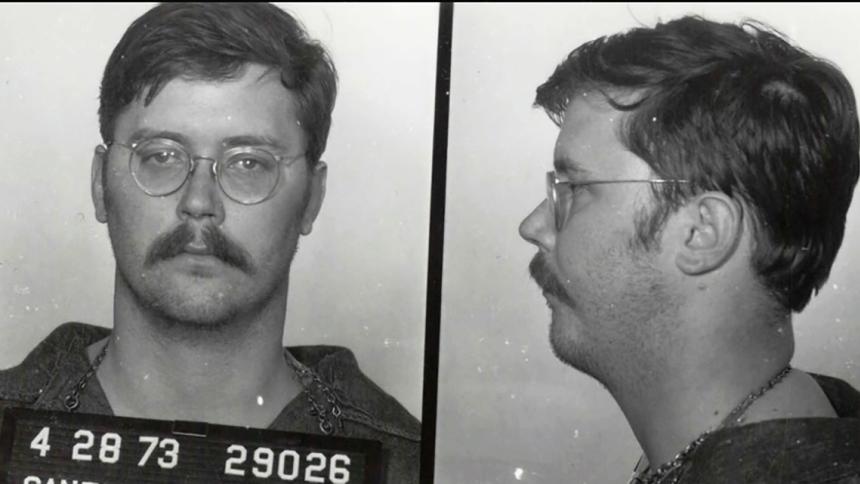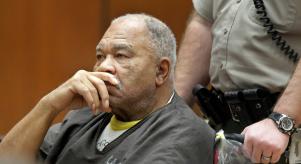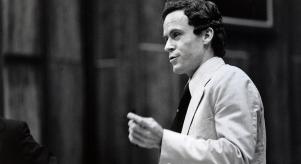
'Murdersville, USA': When Santa Cruz had two serial killers on the loose
The golden state of California is known as a breeding ground for serial killers. Fronted by white sandy beaches on the Pacific Ocean coastline, California then rises into a steep and treacherous mountainside. The state is vast, and it presents some of the most diverse landforms in all of the United States. That’s possibly why it’s considered the perfect hunting ground and dumping spot. Santa Cruz was once dubbed ‘The Murder Capital of the World’, with both Edmund Kemper and Herbert Mullin stalking and killing their victims there in the early 1970s.
For almost a year between May 1972 and April 1973, Edmund Kemper killed and dismembered eight women. He had already served time for killing his grandparents when he was a teenager, and once he was released, young women in the Santa Cruz area began to disappear. Many of them were college students, and a lot of people in the area simply assumed that they had run away. In the 1970s, hitchhiking was a popular method of transport, and Kemper used this to his advantage, picking up young women and then killing them.
It wasn’t until bodies began turning up that the disappearances were taken seriously. In August 1972, a skull was found on Loma Prieta Mountain in Santa Cruz County. It was the skull of Mary Ann Peso, who Kemper had abducted alongside her friend, Anita Luchessa, in May of that year. Over the next couple of months, more and more bodies began to appear. They were all young women that had simply vanished without a trace. All of them had been picked up and killed by Kemper.
Around the same time, another serial killer was operating in Santa Cruz: Herbert Mullin.
Mullin was born on 18th April 1947. At school, he was popular and voted most likely to succeed. At 16-years-old, Mullin’s character completely changed after the death of his best friend. He set up a shrine in his honour, and the following year, he began to hear voices. For a couple of years, Mullin sought out help. He checked himself in and out of various psychiatric facilities but always absconded, and eventually, he turned to mind-altering drugs.
In the fall of 1972, Mullin began to listen to the voices in his head. These voices were ordering him to kill. Mullin believed that he was receiving telepathic orders from his father and that he needed to kill to prevent an earthquake that was going to hit San Francisco in January 1973.
While Kemper was only interested in killing women, Mullin did not discriminate when it came to his victims. In October 1972, Mullin took his first life. He had pulled over and feigned car trouble. Lawrence White, a 55-year-old drifter, was offering Mullin assistance when he was beaten to death with a baseball bat.
Less than two weeks later, Mullin picked up a hitchhiker called Mary Guilfoyle. He stabbed her to death and opened up her body. He held the belief that human bodies were filled with ‘contamination’. His next victim was Father Henri Tomei, a priest. Mullin entered St. Mary’s Church in Los Gatos with the intention of confessing. However, once inside the confessional, he stabbed and stomped the priest to death.
In total, Mullin killed thirteen people, including four teenagers who were camping in the woods, a drug dealer and his wife, and the wife and children of another drug dealer.
Kemper and Mullin were operating simultaneously, and this confused investigators who were investigating the string of murders. They struggled to determine whether there was one killer or multiple, and if there were multiple, whether they were working together or separately. The random nature of the crimes and the variety of victims and methods of murder stumped investigators. Kemper and Mullin also used the same dumping ground for their victims – the Santa Cruz mountains.
At one of the crime scenes, District Attorney Peter Chang commented to a reporter: ‘This must be Murdersville, U.S.A.’ A number of newspapers picked up on this comment, and erroneously reported that he had referred to Santa Cruz as the ‘Murder Capital of the World’.
Mullin was finally apprehended on 13th February 1973, just minutes after taking his final victim, 72-year-old Fred Perez, who was shot dead in his front garden.
However, Kemper was still a free man, and still abducting and killing women in Santa Cruz. As the bodies continued to pile up, District Attorney Chang was asked by reporters how it was possible with Mullin behind bars. He replied: ‘We then have another homicidal maniac.’ He went on to suggest that the murders were perpetrated by somebody from out of state.
On Easter weekend in 1973, Kemper killed his mother and her friend. Afterwards, he called Santa Cruz police to confess to his string of murders, bringing an end to the reign of terror the two serial killers had held over the city.
Mullin was convicted on two counts of first-degree murder and eight counts of second-degree murder. Since there was no capital punishment at the time of his convictions, he was sentenced to life in prison. Kemper was convicted of eight murders. While capital punishment had been suspended in California at the time, Kemper requested a death sentence. He was sentenced to life in prison.
Coincidentally, Kemper and Mullin shared adjoining cells at one point. Kemper later confessed that he hated Mullin and felt as though he was a ‘cold-blooded killer’ who had killed people ‘for no good reason’. He also referred to Mullin as ‘a creep with no class’. Kemper even conducted what he described as ‘behaviour modification treatment’ on Mullin, feeding him peanuts when he was good and throwing water on him when he was bad.








